
How to Troubleshoot Common Industrial Vacuum Pump Issues
December 11, 2024
How Air Compressors Aid in Reducing Factory Noise Pollution
December 25, 2024Diagnosing Air Compressor Vibration Issues: Tips for Technicians
Kaishan USA | December 18, 2024| Uncategorized
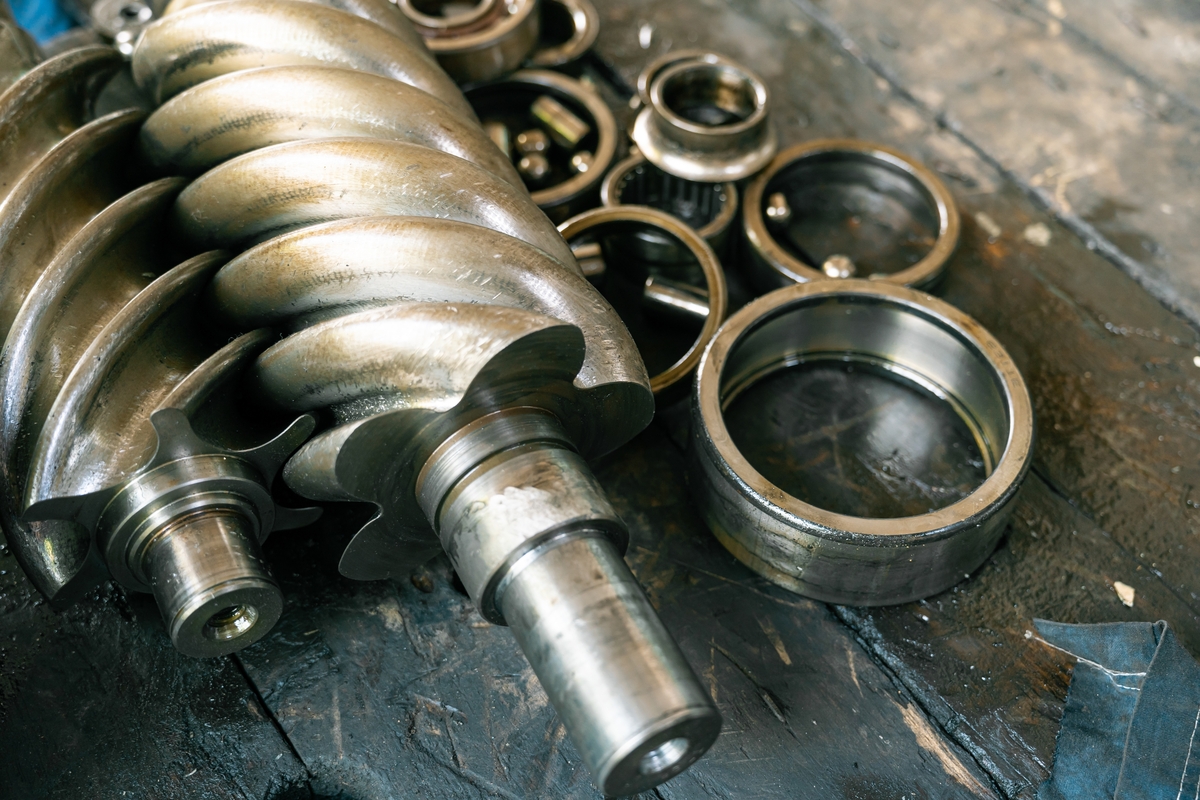
An air compressor’s bearings can wear, and rotors can become misaligned over time, causing vibration.
Rotary screw compressors are rotating machines. So, you can expect some vibration. But how much is too much? It depends.
The reasons why? Each compressor is different.
We manufacture our compressors following exacting standards, of course. However, after you install a compressor, it’s a whole different ballgame.
Two compressors could be identical when they leave our plant, but then they are plunged into the real world. Where altitudes are different. Ambient temperatures are different. The humidity level is different. Power sources are different. Uses are different. And all those factors affect how individual compressors perform in a specific setting.
As a result, there’s no general rule about what’s causing vibration. Or what it might mean for your system.
That’s not to say that vibration isn’t a problem. It is. It’s an important indicator of your compressor’s overall health and performance in your facility. So, it’s smart to pay attention to it.
The key is knowing when and how to do that. We’ll start by explaining how increased vibration affects your compressor.
How Vibration Impacts Your Compressor
Excessive vibration can cause several different problems for your compressor and your compressed air system:
- Downtime. Vibration, of course, can be an indication that something is seriously wrong with your compressor and that failure is imminent. It may indicate your compressor is about to break down and cause production to go offline.
- Electricity consumption. Too much vibration probably indicates there’s a problem serious enough to increase your machine’s power consumption.
- Equipment life. Vibration can also cause increased wear on seals, bearings and couplings and lessen a compressor’s expected lifespan.
- Sound. Vibration makes a piece of equipment that’s sometimes noisy even louder.
- Loosening. Prolonged exposure to vibration may loosen bolts, mounting brackets and other fasteners. Pipe fittings, seals and welds may begin to leak.
The stakes can be high. How high? It all depends on what’s causing the vibration.
What Causes Vibration
There are several different factors that can cause vibrations.
- Bearings. Vibration may indicate the bearings are showing signs of increased wear.
- Alignment. Long-term wear can cause the rotors of rotary screw air compressors to become misaligned. In other types of compressors, flywheels, pulleys, crankshafts and other components can also experience alignment problems.
- Mounting bolts and brackets. You should always check to ensure all the major bolts and brackets are tight. The problem also may have started during installation, with workers failing to remove the bolts and brackets used to hold the machine in place during shipping. Those often cause unusual noises and vibrations when left in place.
- Enclosures. Most air compressors now have enclosures designed to protect the unit and reduce noise. All Kaishan compressors come with heavy-duty, sound-deadening enclosures using thicker gauges of steel or aluminum to absorb sound and reduce noise propagation.
- Belts. Belt-drive machines can also have vibration from belts and pulleys. To prevent that, we have equipped KRSB belt-drive rotary screw air compressors with automatic belt tensioning to provide longer belt life and ideal tension with no belt slippage.
- Other equipment. Vibration could originate from other machines nearby and transfer to your compressor.
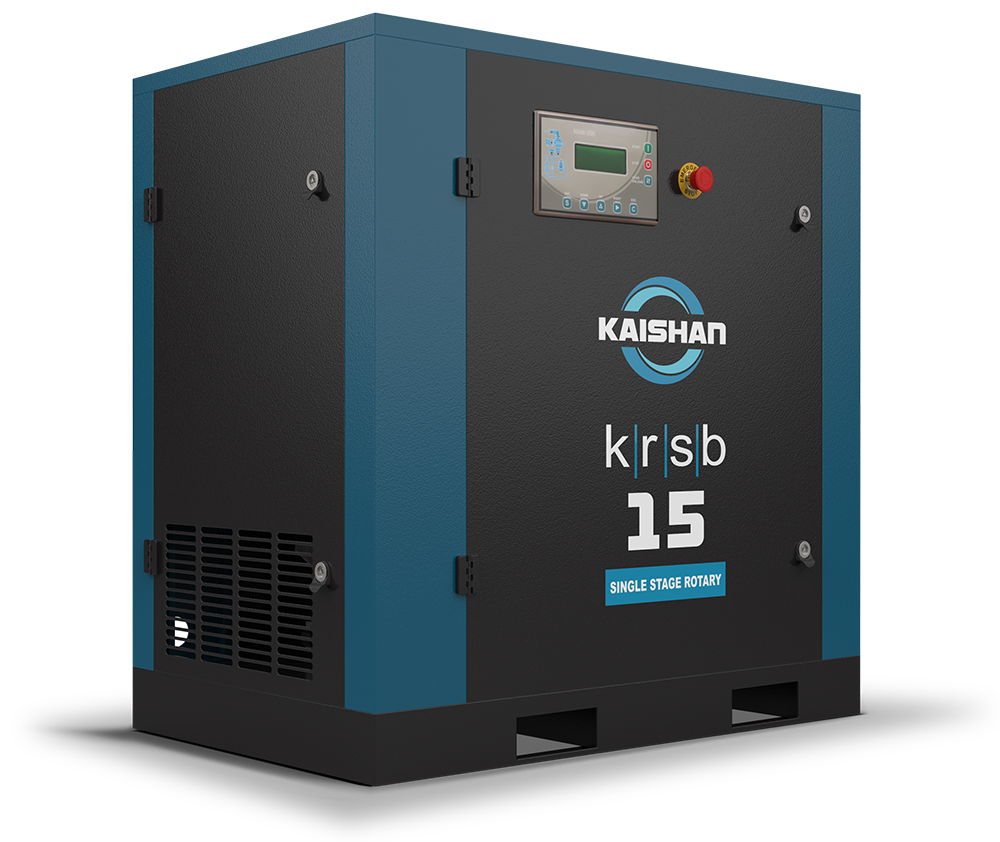
The Kaishan KRSB belt-drive rotary screw air compressor is equipped with automatic belt tensioning that should help prevent vibration from belt slippage and related problems.
Vibration Itself Is Not a Primary Indicator
Many operators immediately jump to the conclusion that their bearings are failing, and they may be right. Grinding noises, of course, would be further confirmation of that assumption.
But vibration itself is not a sole indicator. It’s like a runny nose—it could be a symptom of many things.
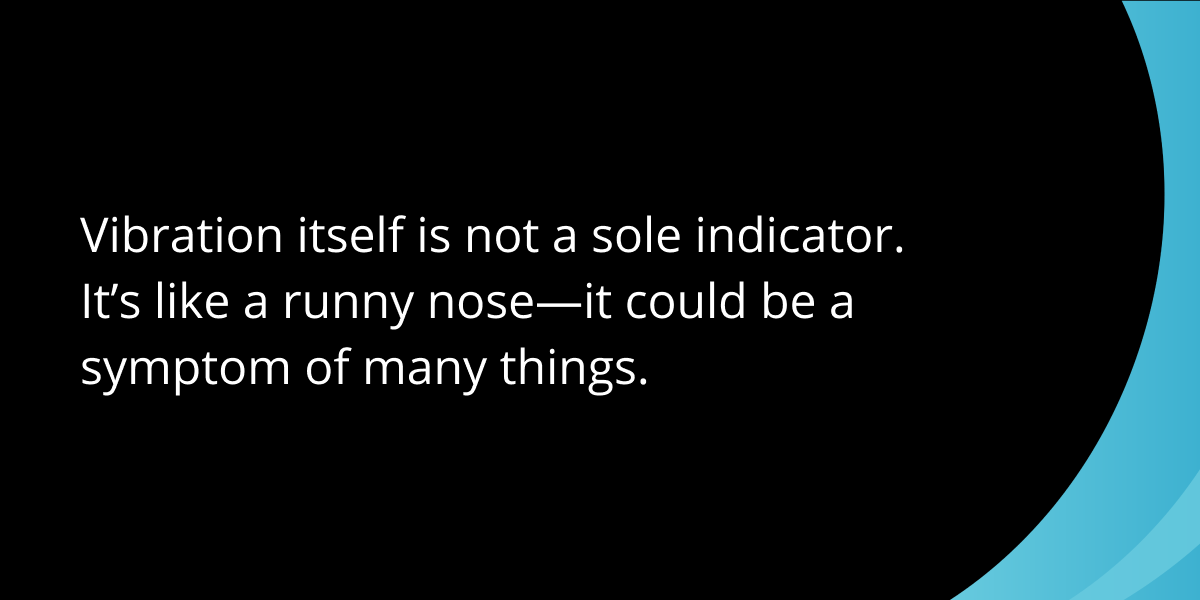
You could easily misdiagnose a problem if you’re only focusing on vibration. There’s usually not enough information to identify the root cause of the problem.
Your first step after documenting an increase in vibration is to gather information on other key indicators, including:
- Oil sampling. If you’re starting to see some metal shavings in the oil, that may indicate your bearings are starting to go bad.
- Temperatures. Significant changes in temperatures could also indicate more serious problems.

Oil sampling is an important step in determining the cause of vibration in your air compressor.
Armed with that information, you can take a few additional steps.
What You Should Do About Vibration
- Capture a baseline reading using a shock pulse monitoring (SPM) meter. The best time is when your machine is running properly. Take a reading immediately after initial startup to establish a baseline. Then, monitor it.
- Tighten all bolts and mounting brackets.
- Check the base to ensure your compressor is resting on a flat, solid surface. Do not bolt down a rotary screw compressor.
- Add a baseline reading from your SPM meter to your routine maintenance, and make it part of your air compressor maintenance checklist. You’re already going to measure voltage, amps and temperature, so we’d suggest you include vibration testing as part of that effort. An SPM test is an essential tool for air compressor troubleshooting. If you contact your manufacturer, the first thing they probably will do is to ask for your baseline measurement.
The addition of the baseline reading to your routine maintenance underscores the importance of having a maintenance program in the first place. You can avoid many problems that cause vibration with a good maintenance program. If you need help establishing a maintenance program, read our blog post “Ten Need-to-Know Rotary Screw Air Compressor Maintenance Tips.” Or download our white paper, “Air Compressor Maintenance: Ultimate Guide and Checklist.”
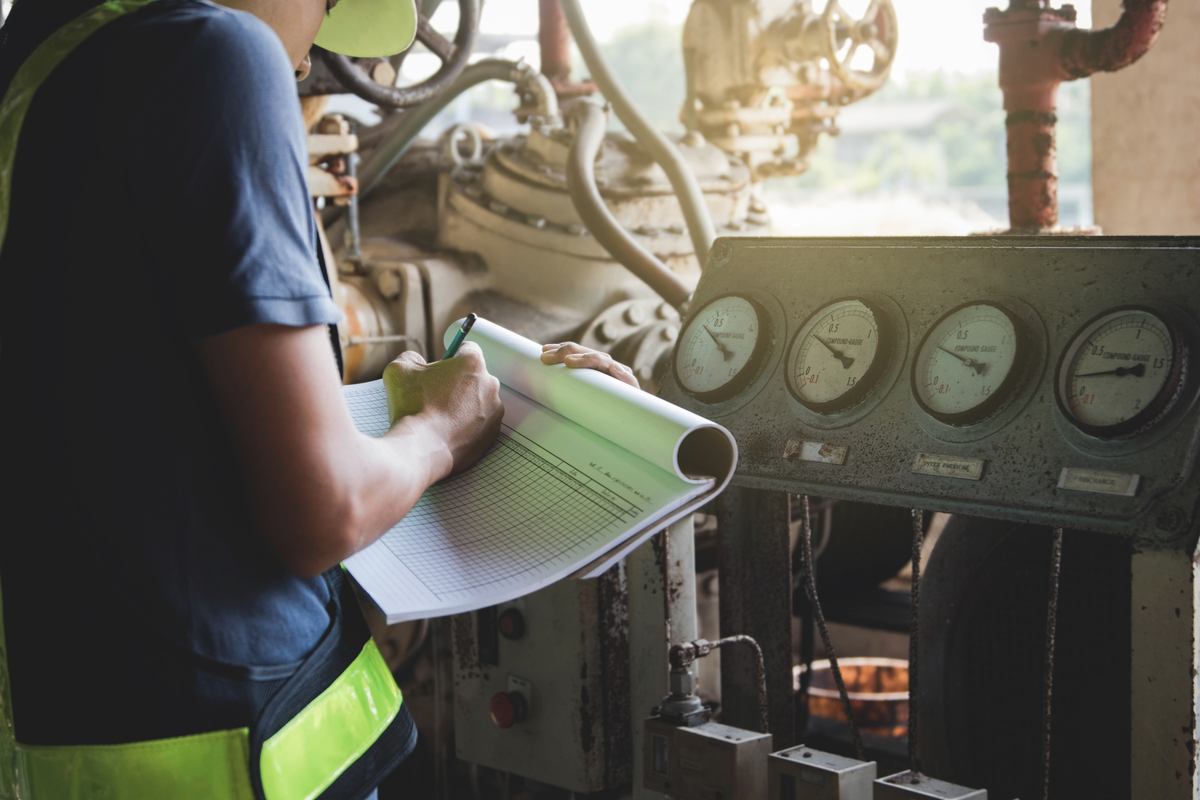
We strongly recommend that your air compressor maintenance checklist capture a baseline vibration reading using an SPM meter.
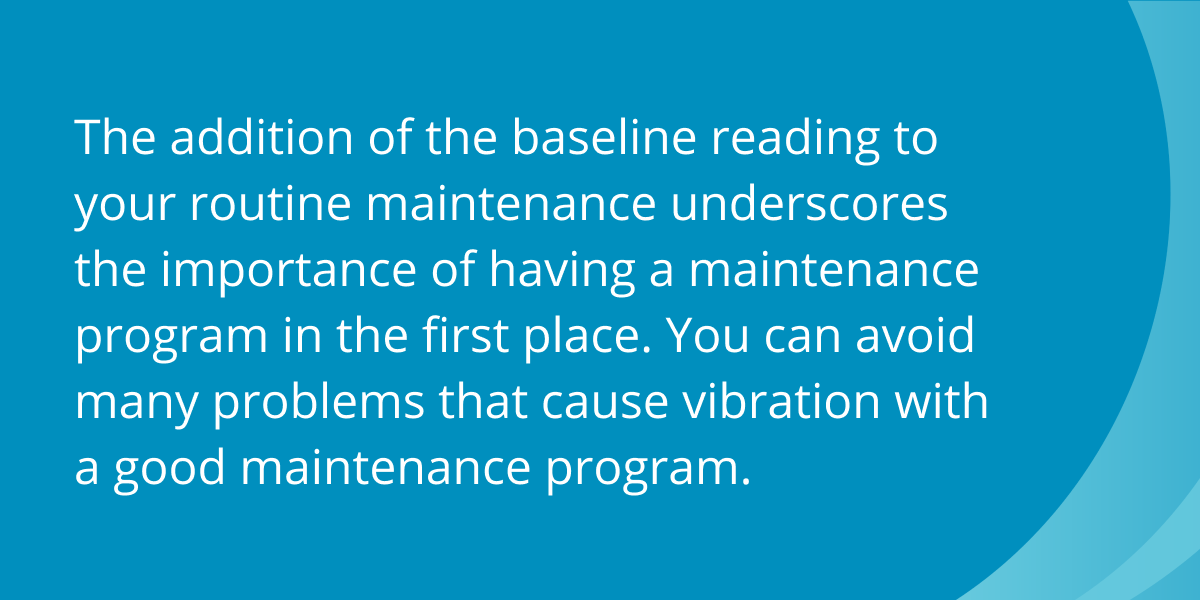
We strongly recommend including the baseline vibration reading and general maintenance as air compressor maintenance tips. If those initial steps don’t work, it’s time to ask for expert help.
Still Having Vibration Issues? Get Local Help
If you’re finding an increase in air compressor vibration after taking the initial steps, it’s wise to call in an experienced compressed air professional. They can take you to the next level and prevent the downtime, damage and higher electricity consumption that may result from the underlying issue causing the vibration.
Kaishan USA works with a nationwide network of independent distributors, who can help diagnose vibration problems and lead you to solutions. They can provide on-site help and consultation and offer outstanding maintenance and service as needed.
Key Takeaways
- Rotary screw air compressors are rotating machines, so you can expect some vibration.
- Each compressor is different, so there’s no general rule about what’s causing vibration. Or what it might mean for your system.
- Vibration can result in many problems for your system, including downtime, high energy consumption, reduced equipment life, noise and loosening of key joints and fasteners.
- Problems with bearings, alignment, mounting hardware, enclosures, belts or other equipment can cause vibration.
- Vibration is not a primary indicator of a problem. You need to have other information to know the cause (and the consequences).
- Start by getting a baseline measurement of vibration, then tighten all bolts and fittings.
- If the problem persists, you should seek the help of a qualified compressed air professional.
Let Us Help
Vibration in your rotary screw air compressor may be an indication of more serious problems. So, it’s critical to the operation of your compressed air system and all the processes that rely on that system that you resolve those issues in a timely manner. If you need help getting to the root causes of air compressor vibration, get in touch with the experts at Kaishan. Contact us today.
Random stat or
customer quote
textXXtext
text

